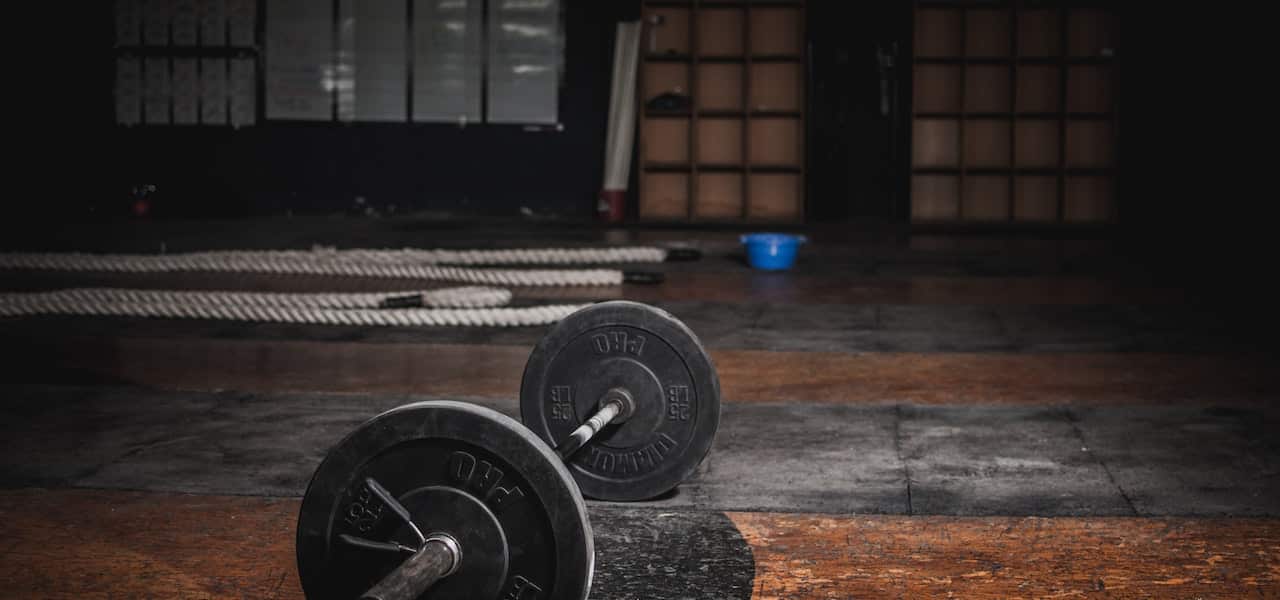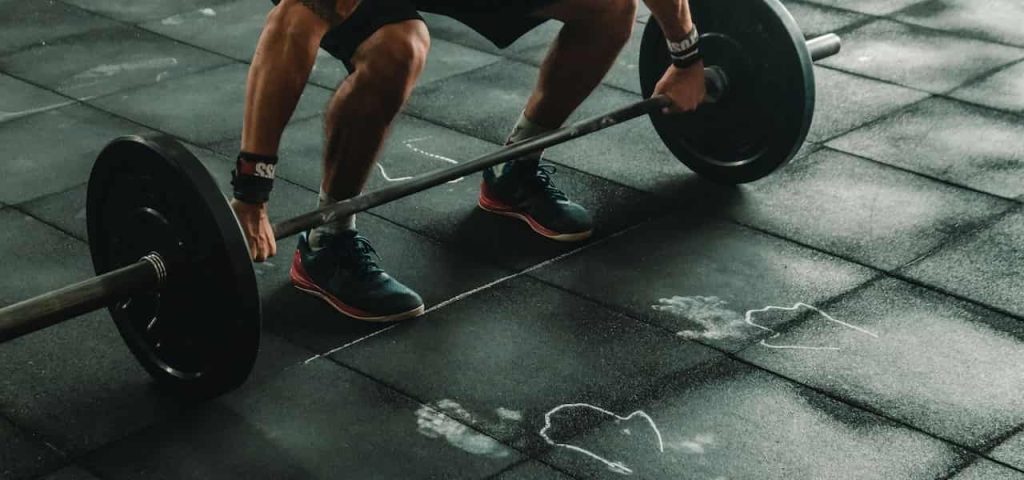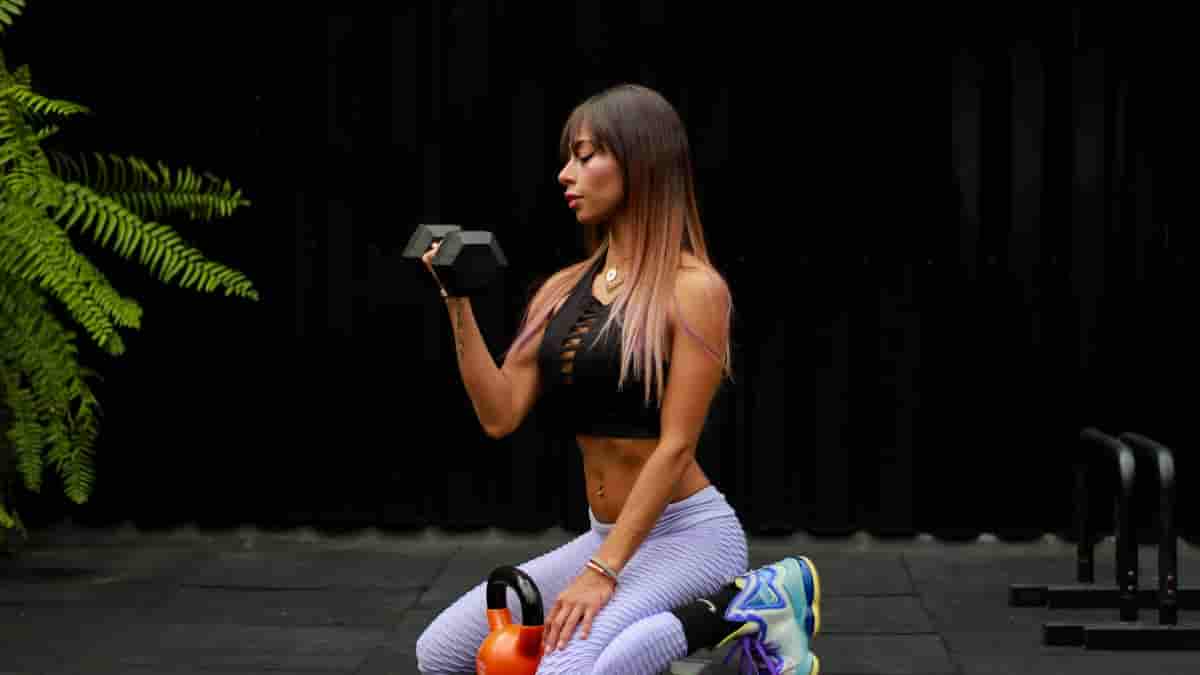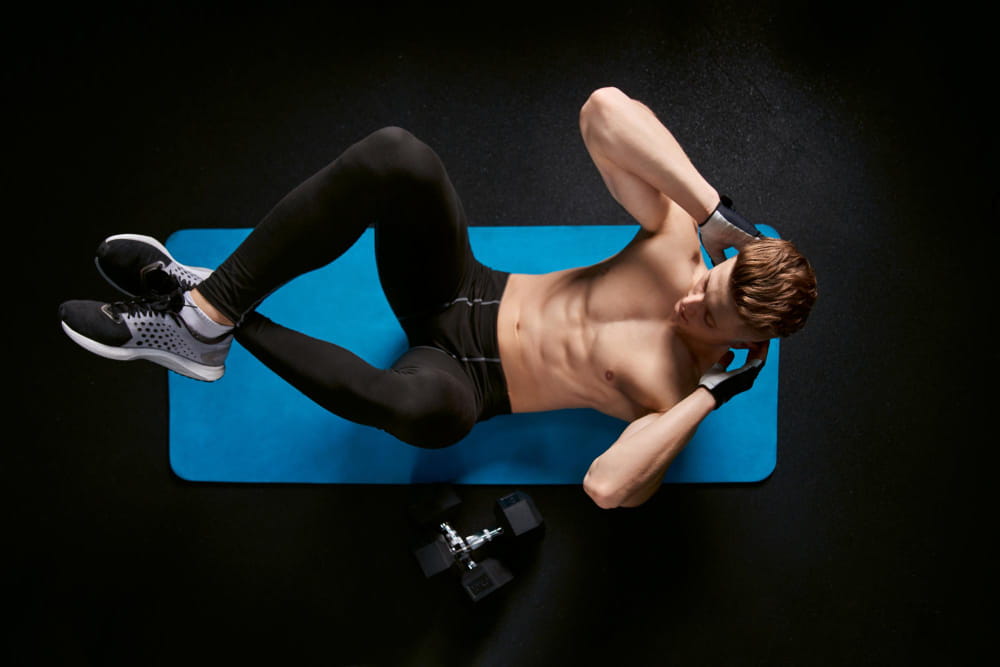Fitness
Cardio or Weight First? Debunking the Myth for Optimal Fitness

Here is your complete guide to cardio or weight first
Introduction to Cardio or Weight First
When it comes to achieving optimal fitness, cardiovascular exercise and strength training are two of the most effective methods. However, a common debate among fitness enthusiasts is whether to do cardio or weight training first during their workouts. Many believe that doing cardio before weight training is the best way to burn fat and improve overall fitness. But is this notion supported by science? In this article, we will delve into the benefits of cardio and strength training, explore the myth of the optimal order, and provide evidence-based recommendations to help you determine the best approach for your fitness routine.
The Benefits of Cardiovascular Exercise
Cardiovascular exercise, such as running, cycling, or swimming, is known for its numerous health benefits. Regular cardio workouts can improve cardiovascular health, increase endurance, and aid in weight loss. Studies have shown that cardio exercises help to strengthen the heart, lower blood pressure, and reduce the risk of chronic diseases such as heart disease and diabetes. Additionally, cardio workouts can improve lung function and boost mood by releasing endorphins, which are often referred to as the “feel-good” hormones.

The Benefits of Strength Training
Strength training, also known as weight lifting or resistance training, involves working against resistance to build muscle strength and endurance. Contrary to the common myth that strength training will make you bulky, it actually offers a plethora of benefits. Strength training can increase muscle mass, improve bone density, and enhance metabolism, leading to increased calorie burning even at rest. Building muscle can also help with weight management as it increases the body’s ability to burn calories and improves overall body composition. Furthermore, strength training can enhance functional fitness, making daily activities easier, and reducing the risk of injuries, especially as we age.

Debunking the Myth: Cardio or Weight First?
One of the most debated topics in fitness is whether to do cardio or strength training first during a workout. The popular belief is that doing cardio before strength training will help burn more fat, as the body taps into glycogen stores for energy during cardio, and then turns to fat stores during strength training. However, this notion has been debunked by scientific evidence. Several studies have shown that the order of cardio and strength training does not significantly impact fat burning or overall fitness gains. The most important factor is the total volume and intensity of the workouts, rather than the order in which they are performed.
The Science Behind the Order
While the order of cardio and strength training may not significantly impact fat burning, there are physiological and metabolic factors that can influence the order. For instance, doing cardio before strength training may result in fatigue, which can affect strength and performance during weight lifting. On the other hand, starting with strength training may lead to reduced glycogen stores, which can impact performance during cardio. Fitness level, goals, and time constraints are also important factors to consider when determining the order. Beginners may benefit from starting with strength training to build a solid foundation, while advanced exercisers may prioritize specific goals, such as endurance or muscle building, which may affect the order.
Determining the Optimal Order
So, what is the optimal order for cardio and strength training? The answer is, it depends. There is no one-size-fits-all approach, as different individuals have different needs and goals. The key is to find what works best for you and your body. Here are some practical tips to help you determine the optimal order:
- Consider Your Goals: If your main goal is to improve cardiovascular endurance or train for a specific event such as a marathon, it may make sense to prioritize cardio and do it first during your workouts. However, if your goal is to build muscle, improve strength, or tone your body, starting with strength training may be more beneficial.
- Assess Your Energy Levels: Listen to your body and pay attention to your energy levels. If you feel more energized and focused at the beginning of your workout, it may be better to start with strength training. On the other hand, if you find that you need a warm-up to get your heart rate up and boost your energy, starting with cardio may be a good option.
- Manage Your Time: Consider your schedule and time constraints. If you have limited time for your workout, you may want to prioritize the type of exercise that is most important to you. For example, if you only have 30 minutes to spare, you may choose to do a quick cardio session followed by a shorter strength training workout.
- Listen to Your Body: Everyone’s body is different, and what works for one person may not work for another. Pay attention to how your body responds to different orders of exercises. If you feel more fatigued or experience decreased performance with a particular order, it may be worth experimenting with a different approach to find what suits you best.
How to Decide Whether to Do Cardio Before or After Weights Based on Common Fitness Goals
When deciding whether to do cardio before or after weights, it’s important to consider your fitness goals. If your primary goal is to improve cardiovascular endurance, such as for running or cycling, you may choose to do cardio before weights to ensure that you have enough energy for an effective cardio workout. On the other hand, if your goal is to build muscle and increase strength, prioritizing strength training by doing it before cardio may be beneficial. This allows you to focus on lifting heavier weights and maintaining proper form without being overly fatigued from cardio. Ultimately, the order of exercises should align with your specific fitness goals and preferences.
Can You Do Cardio and Weights on the Same Day?
Yes, it is possible to do cardio and weights on the same day, depending on your fitness level, time availability, and recovery abilities. However, it’s important to carefully manage your workout intensity, duration, and order of exercises to avoid overexertion and potential injury. To effectively combine cardio and weights on the same day, you can either do separate sessions in the same day with adequate rest in between, or you can perform them in the same workout session by prioritizing one type of exercise first, followed by the other. Listening to your body, managing your time, and gradually increasing the intensity of your workouts can help you safely incorporate both cardio and weights into your routine.
What’s the Best Type of Cardio to Combine with Weight Training?
The best type of cardio to combine with weight training depends on your fitness goals, preferences, and overall fitness level. There are various options to choose from, including but not limited to:
- High-Intensity Interval Training (HIIT): HIIT involves short bursts of high-intensity exercises followed by periods of rest or lower-intensity recovery exercises. It can be an effective way to improve cardiovascular fitness while also burning calories and building muscle.
- Plyometrics: Plyometric exercises, such as box jumps or burpees, are explosive movements that can improve cardiovascular endurance and also enhance strength and power.
- Stair Climbing: Climbing stairs or using a stair climber machine can be a challenging cardio workout that also engages the muscles of the lower body.
- Rowing: Rowing is a full-body workout that can improve cardiovascular endurance and also engage muscles in the upper body, core, and lower body.
It’s important to choose a type of cardio that complements your weight training routine and aligns with your fitness goals, while also considering your fitness level, joint health, and any specific health conditions you may have. Consulting with a fitness professional can help you determine the best type of cardio to combine with weight training based on your individual needs.
How to Combine Cardio and Weight Training for Your Fitness Goals
Combining cardio and weight training can be done in various ways, depending on your fitness goals and preferences. Here are some tips for effectively combining cardio and weight training in your fitness routine:
- Prioritize Your Fitness Goals: Determine whether your main goal is to improve cardiovascular fitness, build muscle, or achieve a balance of both. This will help you decide on the order and intensity of your cardio and weight training sessions.
- Plan Your Workouts: Create a workout plan that incorporates both cardio and weight training sessions throughout the week. Consider factors such as workout duration, intensity, and frequency, based on your fitness level and recovery abilities.
- Warm Up Properly: Prior to your workouts, warm up properly with dynamic stretches or a short cardio session to increase your heart rate, warm up your muscles, and prepare your body for exercise.
- Choose Your Order: Decide whether to do cardio before or after weights based on your fitness goals
What is a Burpee? The Ultimate Guide to this High-Intensity Exercise
How frequently should you work out with weights and cardio?
| Fitness Goal | Cardio Frequency | Weight Training Frequency |
|---|---|---|
| General Fitness | 3-5 days per week | 2-3 days per week |
| Cardio Endurance | 4-6 days per week | 1-2 days per week |
| Muscle Building | 1-2 days per week | 3-4 days per week |
| Weight Loss | 4-6 days per week | 2-3 days per week |
FAQs:
Should You Do Cardio or Weights First to Lose Belly Fat?
There is no one-size-fits-all answer to this question, as the order of cardio and weights during a workout does not directly affect belly fat loss. What matters most for losing belly fat is creating a calorie deficit through a combination of a healthy diet and regular exercise, including both cardiovascular exercise and strength training. A balanced approach that incorporates both cardio and weights, regardless of the order, can help you burn calories, build muscle, and improve overall fitness, which can contribute to belly fat loss over time.
Read More About Almonds – The Perfect Snack for Weight Loss.
What Happens If You Do Cardio First Before Weights?
Doing cardio before weights can have an impact on your energy levels and performance during your strength training session. Cardio exercises, such as running or cycling, require a lot of energy and can deplete your glycogen stores, which are needed for fueling your muscles during strength training.
Read More About How to Lose Thigh Fat: A Comprehensive Guide for Women.
This can result in reduced strength and endurance, leading to a less effective weight lifting session. Additionally, if you’re fatigued from cardio, you may not be able to lift as heavy or perform as many reps, potentially compromising the effectiveness of your strength training workout. However, some individuals may prefer doing cardio first as a warm-up to increase heart rate and prepare the body for a more intense strength training session. Ultimately, it depends on your personal preference and how your body responds to different orders of exercises.
Read More About How to Gain Weight During Your Period: Tips and Tricks.
Is 20 Minutes of Cardio Enough After Lifting Weights?
While 20 minutes of cardio after lifting weights can provide additional cardiovascular benefits, the adequacy of this duration depends on various factors, such as your fitness level, intensity of the cardio workout, and overall exercise routine. The American Heart Association recommends at least 150 minutes of moderate-intensity aerobic activity or 75 minutes of vigorous-intensity aerobic activity per week for adults.
Read More About 10 Surprising Benefits of Indoor Cycling You Need to Know About.
Therefore, 20 minutes of cardio after lifting weights may not be sufficient to meet these guidelines if it is your only form of cardiovascular exercise for the week. However, it can still be beneficial for improving cardiovascular health and burning additional calories, especially if you are already incorporating other forms of cardio into your routine. It’s important to customize your exercise routine based on your individual goals and fitness level, and consider consulting with a fitness professional to determine the appropriate duration and intensity of cardio for your needs.
Read More About Coffee Caffeine vs Coke.
Conclusion
In conclusion, the myth of the optimal order of cardio and strength training has been debunked by scientific evidence. There is no one-size-fits-all answer, and the best approach depends on individual goals, energy levels, time constraints, and personal preferences. Whether you choose to start with cardio or strength training, the most important factor is to maintain consistency and regularity in your exercise routine. Incorporating both cardiovascular exercise and strength training into your fitness routine can provide a well-rounded and effective approach to achieving optimal fitness and overall health. So, find what works best for you and make it a part of your healthy lifestyle. Happy exercising!
Read More About Protein in 8oz Steak.
Read More Also About 10 Health Benefits of Cycling Every Day You Need to Know.
Fitness
Canned Green Tea: The Perfect Pick-Me-Up for Busy Days

Here is your complete guide to Canned Green Tea
Introduction to Canned Green Tea
Canned green tea is a popular beverage that has been gaining popularity in recent years. It is a type of green tea that is packaged in a can and is ready to drink. Green tea is known for its many health benefits, and canned green tea is no exception. In this article, we will explore the benefits of canned green tea, its history, and the different types of canned green tea available. We will also compare canned green tea to other types of green tea, such as loose leaf green tea, bottled green tea, and instant green tea. Finally, we will provide a list of frequently asked questions about canned green tea to help you make an informed decision about whether it is the right choice for you.
Benefits of Canned Green Tea
Canned green tea has many health benefits. It is rich in antioxidants, which help to protect your body from damage caused by free radicals. It also contains polyphenols, which help to reduce inflammation and improve your overall health. Canned green tea is also a good source of vitamins and minerals, such as vitamin C, vitamin E, and potassium. It is also low in calories, making it a great choice for those who are watching their weight.
History of Canned Green Tea
Canned green tea has a long history. It was first introduced in Japan in the 19th century, and it quickly became popular throughout the country. Also, it was later introduced to the United States in the early 20th century, and it has since become a popular beverage in many countries around the world. It is now available in many different flavors and varieties, making it a popular choice for people of all ages.
Types of Canned Green Tea
There are many different types of canned tea available. Some of the most popular types include:
- Matcha: This type of green tea is made from the leaves of the tea plant, and it is rich in antioxidants and polyphenols. It is also a good source of vitamins and minerals.
- Sencha: This type of green tea is made from the leaves of the tea plant, and it is rich in antioxidants and polyphenols. It is also a good source of vitamins and minerals.
- Genmaicha: This type of green tea is made from the leaves of the tea plant, and it is rich in antioxidants and polyphenols. It is also a good source of vitamins and minerals.
- Hojicha: This type of green tea is made from the leaves of the tea plant, and it is rich in antioxidants and polyphenols. It is also a good source of vitamins and minerals.
Comparison Table: Types of Canned Tea
| Type | Description |
|---|---|
| Matcha | Made from powdered whole leaves; rich flavor |
| Sencha | Most common type; steamed leaves; mild taste |
| Genmaicha | Includes roasted brown rice; nutty flavor |
| Hojicha | Roasted leaves; reddish-brown color; low caffeine content |
Best Time to Consume Canned Tea
Morning
- Drinking green tea in the morning can help boost focus and concentration due to its caffeine content.
- Green tea also contains L-theanine, an amino acid that promotes calmness and improves brain function without negative side effects.
Before Exercise
- Some studies suggest that consuming green tea before working out may increase fat burning and improve exercise performance.
- Green tea can speed up recovery after intense workouts and reduce muscle damage.
Between Meals
- Green tea contains compounds that may inhibit the absorption of iron and other minerals, so it is best consumed between meals to avoid nutrient interference.
- Drinking green tea with meals can reduce iron absorption, potentially leading to deficiencies over time.
Evening Considerations
- Green tea contains caffeine, which can cause sleep disturbances if consumed too close to bedtime.
- To prevent sleep problems, it is advisable to avoid drinking green tea up to 6 hours before going to bed.
By considering the timing of consuming canned tea, you can maximize its benefits while minimizing any potential negative effects on your health and well-being. Adjust your consumption based on your personal preferences and daily routine to make the most of this healthy beverage.
Canned Green Tea vs. Loose Leaf Green Tea
It is different from loose leaf green tea in several ways. Loose leaf green tea is made from the leaves of the tea plant, and it is rich in antioxidants and polyphenols. It is also a good source of vitamins and minerals. However, loose leaf is not as convenient as canned tea, as it requires more preparation. It is ready to drink, and it is also more portable than loose leaf green tea.
Canned Green Tea vs. Bottled Green Tea
It is different from bottled green tea in several ways. Bottled green tea is made from the leaves of the tea plant, and it is rich in antioxidants and polyphenols. It is also a good source of vitamins and minerals. However, bottled is not as convenient as canned tea, as it requires more preparation. It is ready to drink, and it is also more portable than bottled green tea.
Nutritional Comparison Table: Canned Green Tea vs Other Beverages
| Beverage | Calories (per 12 oz) | Antioxidants (mg) | Sugar (g) |
|---|---|---|---|
| Canned Green Tea | 30 | 100 | 0 |
| Bottled Green Tea | 70 | 50 | 20 |
| Soda | 140 | 0 | 39 |
Canned Tea vs. Instant Green Tea
It is different from instant green tea in several ways. Instant green tea is made from the leaves of the tea plant, and it is rich in antioxidants and polyphenols. It is also a good source of vitamins and minerals. However, instant green tea is not as convenient as canned tea, as it requires more preparation. It is ready to drink, and it is also more portable than instant green tea.
Comparison Table: Canned Tea vs Other Forms
| Form | Convenience | Preparation Time |
|---|---|---|
| Canned | Ready-to-drink | None |
| Loose Leaf | Requires brewing | Moderate |
| Instant | Quick mix | Instant |
How to Choose the Best Canned Green Tea
Selecting the right canned tea involves considering factors such as:
- Ingredients: Opt for it with minimal additives and natural sweeteners.
- Sugar Content: Look for options with low or no added sugars to avoid unnecessary calories.
- Packaging: Choose BPA-free cans to minimize exposure to harmful chemicals.
Canned Green Tea vs. Green Tea Powder
It is different from green tea powder in several ways. Green tea powder is made from the leaves of the tea plant, and it is rich in antioxidants and polyphenols. It is also a good source of vitamins and minerals. However, powder is not as convenient as canned tea, as it requires more preparation. It is ready to drink, and it is also more portable than green tea powder.
Canned Tea vs. Green Tea Extract
It is different from green tea extract in several ways. Green tea extract is made from the leaves of the tea plant, and it is rich in antioxidants and polyphenols. It is also a good source of vitamins and minerals. However, extract is not as convenient as canned green tea, as it requires more preparation. It is ready to drink, and it is also more portable than green tea extract.
Canned Green Tea vs. Green Tea Supplements
It is different from green tea supplements in several ways. Green tea supplements are made from the leaves of the tea plant, and they are rich in antioxidants and polyphenols. They are also a good source of vitamins and minerals. However, green tea supplements are not as convenient as canned tea, as they require more preparation. It is ready to drink, and it is also more portable than green tea supplements.
Canned Tea vs. Green Tea Energy Drinks
It is different from green tea energy drinks in several ways. Green tea energy drinks are made from the leaves of the tea plant, and they are rich in antioxidants and polyphenols. They are also a good source of vitamins and minerals. However, energy drinks are not as convenient as canned tea, as they require more preparation. It is ready to drink, and it is also more portable than green tea energy drinks.
Canned Tea vs. Green Tea Tablets
It is different from green tea tablets in several ways. Green tea tablets are made from the leaves of the tea plant, and they are rich in antioxidants and polyphenols. They are also a good source of vitamins and minerals. However, tablets are not as convenient as canned tea, as they require more preparation. It is ready to drink, and it is also more portable than green tea tablets.
Canned Tea vs. Green Tea Capsules
It is different from green tea capsules in several ways. Green tea capsules are made from the leaves of the tea plant, and they are rich in antioxidants and polyphenols. They are also a good source of vitamins and minerals. However, capsules are not as convenient as canned tea, as they require more preparation. It is ready to drink, and it is also more portable than green tea capsules.
Canned Tea vs. Green Tea Sachets
Ir is different from green tea sachets in several ways. Green tea sachets are made from the leaves of the tea plant, and they are rich in antioxidants and polyphenols. They are also a good source of vitamins and minerals. However, sachets are not as convenient as canned tea, as they require more preparation. It is ready to drink, and it is also more portable than green tea sachets.
Canned Tea vs. Green Tea Bags
It is different from green tea bags in several ways. Green tea bags are made from the leaves of the tea plant, and they are rich in antioxidants and polyphenols. They are also a good source of vitamins and minerals. However, bags are not as convenient as canned tea, as they require more preparation. It is ready to drink, and it is also more portable than green tea bags.
How to Store and Serve
To maintain the freshness and flavor of canned tea, follow these tips:
- Refrigerate: Store it in the refrigerator to preserve its taste and aroma.
- Serve Chilled: Enjoy it over ice for a refreshing treat on hot days.
- Reheat: It can be gently reheated for a soothing beverage during colder months.
Tips for Storing and Serving Canned Green Tea
Storage Tips
- Store IT in a cool, dry place away from direct sunlight.
- Avoid storing it in the refrigerator, as it can absorb odors from other foods.
- Keep it away from strong odors, such as spices or detergents.
- Store it in a sealed container to protect it from moisture and air.
Serving Tips
- Serve it at room temperature for the best flavor.
- If you prefer a hot drink, heat the canned tea gently in a saucepan or microwave.
- Add a squeeze of lemon or a sprinkle of sugar to enhance the flavor of canned tea.
- Serve it with a slice of lemon or a sprig of mint for a refreshing drink.
By following these tips, you can ensure that your canned tea stays fresh and flavorful for longer. Enjoy your canned tea in a variety of ways to suit your taste preferences!
Frequently Asked Questions
What are the health benefits of canned green tea?
It is rich in antioxidants, which help to protect your body from damage caused by free radicals. It also contains polyphenols, which help to reduce inflammation and improve your overall health.
Is canned green tea better than loose leaf green tea?
It is more convenient than loose leaf green tea, as it is ready to drink and more portable.
Read Also: Push Pull Machine.
How many times can I drink canned green tea in a day?
It is recommended to consume canned tea in moderation, typically 1-3 cans per day depending on your caffeine tolerance.
Read Also: Alternatives for T Bar Row.
Can children drink canned green tea?
It is advisable for children to consume canned tea in moderation due to its caffeine content.
Read Also: Compound Chest Exercises.
Are there any side effects of drinking too much canned green tea?
Excessive consumption of canned tea can lead to caffeine-related side effects such as insomnia or increased heart rate.
Read Also: Wrestling Neck Exercises.
Conclusion
In conclusion, canned green tea offers a convenient way to enjoy the health benefits of traditional green tea on-the-go. With various types available on the market, each offering unique flavors and benefits, there’s a canned tea option for everyone’s taste preferences. Whether you prefer matcha or sencha, canned green teas provide a refreshing and healthy beverage choice suitable for any occasion.
Read Also: Lite Mayonnaise Nutrition Facts.
Remember to always check the ingredients list when choosing a canned tea product to ensure you’re getting the best quality with minimal additives or sugars added.
Read Also: The Surprising Health Benefit of Celery Tea.
So next time you’re looking for a quick pick-me-up or a refreshing drink option, consider reaching for a can of canned greentea for a healthy boost!
Read Also: Keto Ninja Creami Recipes.
Fitness
Arm Exercise Machine: Your Key to Fitness Success

Here is your complete guide to arm exercise machine
Introduction to Arm Exercise Machine
In the realm of fitness and strength training, arm exercise machines play a pivotal role in sculpting and toning your upper body. Whether you’re aiming to build muscle, improve endurance, or simply enhance your overall fitness level, incorporating these machines into your workout routine can yield significant benefits. This comprehensive guide will delve into the world of arm exercise machines, exploring their types, benefits, and how to choose the right one for your fitness goals.
Benefits of Using Arm Exercise Machines
- Increased Muscle Strength: Arm exercise machines target specific muscle groups, helping you build strength and definition.
- Improved Muscle Tone: Consistent use of these machines can lead to enhanced muscle tone and definition in your arms.
- Enhanced Endurance: By engaging in regular arm workouts with these machines, you can boost your endurance levels.
- Calorie Burning and Weight Management: Incorporating arm exercises into your routine can aid in burning calories and managing weight effectively.
Types of Arm Exercise Machines
1. Dumbbells
Dumbbells are versatile and effective tools for arm workouts. They allow for a wide range of exercises targeting various muscle groups.
2. Resistance Bands
Portable and convenient, resistance bands offer variable resistance levels to challenge your muscles in different ways.
3. Cable Machines
Cable machines provide smooth resistance throughout the range of motion, enabling you to perform a variety of exercises for your arms.
4. Arm Ergometers
Arm ergometers offer a low-impact cardiovascular workout while engaging the muscles in your arms effectively.
5. Hand Grippers
Hand grippers are compact devices that help improve grip strength and work on forearm muscles.
Comparison Table of Top 5 Arm Exercise Machines
| Machine Type | Features | Pros | Cons |
|---|---|---|---|
| Dumbbells | Adjustable weights | Versatile | Requires proper form |
| Resistance Bands | Portable, versatile | Variable resistance levels | Limited range of motion |
| Cable Machines | Smooth resistance | Allows for various exercises | Requires space |
| Arm Ergometers | Low impact on joints | Cardiovascular benefits | Limited muscle engagement |
| Hand Grippers | Compact, affordable | Improves grip strength | Limited muscle groups |
How to Choose the Right Arm Exercise Machine
- Consider Your Fitness Goals: Determine whether you aim to build muscle, improve endurance, or enhance overall fitness.
- Space and Budget Constraints: Take into account the space available for the machine and your budget limitations.
- Personal Preferences and Comfort: Choose a machine that aligns with your preferences and provides a comfortable workout experience.
How to Use Arm Exercise Machines Safely
- Proper Form and Technique: Maintain proper posture and alignment throughout each exercise to avoid strain or injury.
- Warm-up and Cool-down Routines: Incorporate dynamic stretches and light cardio activities to prepare your muscles for exercise and aid in recovery afterward.
- Adjusting Equipment for Individual Needs: Ensure that the machines are set up according to your height, weight, and strength level to optimize effectiveness and safety.
Top 10 Tips for Effective Arm Exercise Machine Usage
1. Choose the Correct Machine
Select the appropriate machine for your desired muscle group, such as tricep extension machines for triceps development or cable machines for multi-joint exercises12.
2. Proper Form
Focus on maintaining perfect form throughout each exercise to minimize the risk of injury and maximize muscle activation2.
3. Gradual Progression
Gradually increase the weight and repetitions as you become accustomed to the exercises2.
4. Customizable Settings
Utilize the adjustable settings on machines like cable machines to tailor the difficulty level to your current abilities23.
5. Controlled Movement
Engage in controlled movements rather than allowing the weight to drop rapidly, enhancing muscle activation and preventing injury2.
6. Balance Workouts
Combine exercises that target multiple muscle groups within your arm workout to promote balance and avoid muscle imbalances2.
7. Regularity
Incorporate arm exercises into your weekly routine, ideally twice or thrice per week, to stimulate consistent muscle growth2.
8. Variation
Mix up your exercises regularly to prevent plateaus and continue challenging your muscles2.
9. Wrist Support
Wear wrist straps or gloves to protect your wrists during exercises that involve gripping weights, especially when working with heavier loads2.
10. Rest Periods
Allow sufficient rest periods between sets to enable adequate recovery and prepare for subsequent efforts2.
By adhering to these essential tips, you can safely and effectively utilize arm exercise machines to reach your fitness goals. Always prioritize safety, listen to your body, and seek guidance from certified professionals where necessary.
Complete Workout Guide with Arm Exercise Machines
1. Warm-Up
| Activity | Duration | Description |
|---|---|---|
| Dynamic Stretching | 5-10 minutes | Engage in light cardio and dynamic stretches to increase blood flow and flexibility. |
2. Machine Selection
| Machine Type | Targeted Muscle Group | Example Exercises |
|---|---|---|
| Dumbbells | Biceps, Triceps, Forearms | Bicep Curls, Tricep Extensions, Hammer Curls |
| Resistance Bands | Biceps, Triceps, Forearms | Resistance Band Curls, Tricep Pushdowns, Wrist Curls |
| Cable Machines | Biceps, Triceps, Forearms | Cable Curls, Tricep Extensions, Cable Wrist Curls |
| Arm Ergometers | Biceps, Triceps, Forearms | Arm Bike, Rowing Machine, Hand Bike |
| Hand Grippers | Forearms | Hand Gripper Squeezes, Reverse Wrist Curls |
3. Exercise Sequence
| Exercise Type | Example Exercises |
|---|---|
| Compound Exercises | Cable Rows, Overhead Presses |
| Isolation Exercises | Bicep Curls, Tricep Extensions |
4. Sets and Repetitions
| Exercise Type | Sets | Repetitions |
|---|---|---|
| Compound Exercises | 3-4 | 8-12 |
| Isolation Exercises | 3-4 | 8-12 |
5. Rest Periods
| Exercise Type | Rest Period |
|---|---|
| Compound Exercises | 60-90 seconds |
| Isolation Exercises | 60-90 seconds |
6. Range of Motion
| Exercise Type | Range of Motion |
|---|---|
| Compound Exercises | Full Range of Motion |
| Isolation Exercises | Full Range of Motion |
7. Mind-Muscle Connection
| Exercise Type | Mind-Muscle Connection |
|---|---|
| Compound Exercises | Concentrate on engaging targeted muscle groups |
| Isolation Exercises | Concentrate on contracting targeted muscles during each repetition |
8. Cool Down
| Activity | Duration | Description |
|---|---|---|
| Static Stretching | 5-10 minutes | Engage in static stretches to improve flexibility and reduce muscle soreness. |
9. Hydration and Nutrition
| Activity | Description |
|---|---|
| Hydration | Stay hydrated throughout your workout session. |
| Nutrition | Consume a balanced meal or snack containing protein and carbohydrates post-workout to support muscle recovery and growth. |
10. Progress Tracking
| Activity | Description |
|---|---|
| Progress Tracking | Keep a workout journal or use fitness apps to track your progress, including weights lifted, sets, repetitions, and any adjustments made. This helps monitor improvements and adjust your routine accordingly. |
By following this complete workout guide with arm exercise machines, you can effectively target all areas of your arms, promote muscle growth, and enhance overall strength and fitness levels. Remember to listen to your body, adjust weights as needed, and consult with a fitness professional for personalized guidance.
FAQs Section
What are the best arm exercise machines for beginners?
For beginners, starting with resistance bands or light dumbbells is ideal to ease into arm workouts.
How often should I use an arm exercise machine?
It is recommended to incorporate arm exercises 2-3 times per week for optimal results.
Can arm exercise machines help with weight loss?
While arm exercises contribute to calorie burning, combining them with a balanced diet and cardio is key for weight loss.
Read Also: Wrestling Neck Exercises.
Are there any safety tips for using arm exercise machines?
Ensure proper form, start with lighter weights, and consult a fitness professional if needed to prevent injuries.
Read Also: Menu dieta Dukan fase ataque.
What are some effective arm workouts using these machines?
Bicep curls, tricep extensions, shoulder presses, and rows are effective exercises using various arm exercise machines.
Read Also: The Surprising Health Benefit of Celery Tea.
Conclusion
In conclusion, arm exercise machines are valuable tools for building strength, improving muscle definition, and enhancing overall fitness. By understanding the different types of machines available, their benefits, and how to use them safely, you can take your arm workouts to the next level. Remember to listen to your body, stay consistent with your routine, and enjoy the results of your hard work!
Read Also: Menú Semanal Dieta Sin Residuos.
Fitness
Alkaline Diet Smoothie Bliss: Boost Your Day with Vibrancy!

Here is your complete guide to alkaline diet smoothie
Introduction to Alkaline Diet Smoothie Bliss
The alkaline diet has gained popularity for its potential health benefits, and one delicious way to incorporate it into your routine is through alkaline diet smoothies. These nutrient-packed beverages are not only refreshing but also support the body’s natural pH balance, promoting overall well-being. In this article, we will explore the science behind the alkaline diet, the benefits of alkaline diet smoothies, essential ingredients, and provide you with mouthwatering recipes to kick-start your journey towards a healthier lifestyle.
Understanding Alkaline Diet
To embark on this journey, let’s first understand the core principles of the Alkaline Diet. The premise revolves around the pH level of foods, categorizing them as either alkaline or acidic. Maintaining a balanced pH level in the body is essential for overall well-being. Here’s a handy table to guide you:
| Food Category | pH Level |
|---|---|
| Alkaline | 7.1 – 14 |
| Neutral | 7 |
| Acidic | 0 – 6.9 |
Importance of Alkaline Diet Smoothies
Alkaline diet smoothies play a vital role in supporting the body’s acid-alkaline balance, which is essential for optimal health. By incorporating these smoothies into your diet, you can enjoy a wide range of benefits, including:
- Balanced pH levels: Alkaline diet smoothies help maintain the body’s ideal pH level, which is slightly alkaline, promoting overall health and vitality.
- Nutrient absorption: The abundance of vitamins, minerals, and antioxidants in alkaline ingredients supports better nutrient absorption and utilization in the body.
- Detoxification: The alkaline nature of these smoothies aids in detoxifying the body and reducing the overall toxic load, supporting various organ systems.
Ingredients for an Alkaline Diet Smoothie
When preparing an alkaline diet smoothie, it’s essential to use ingredients that promote an alkaline environment in the body. Here are some key ingredients to include:
Alkaline Diet Smoothie Ingredients
| Ingredient | pH Level | Benefits |
|---|---|---|
| Spinach | 9.8 | Rich in chlorophyll and iron |
| Kale | 8.3 | High in vitamins A, C, and K |
| Cucumber | 7.9 | Hydrating and anti-inflammatory |
| Avocado | 15.6 | Healthy fats and fiber |
| Almonds | 7.5 | Source of plant-based protein |
The Power of Greens in Alkaline Diet Smoothies
Green leafy vegetables are the cornerstone of alkaline diet smoothies due to their highly alkalizing properties. Incorporating an array of greens such as spinach, kale, and cucumber into your smoothies can significantly contribute to:
- pH balance: Greens help counteract the acidic environment in the body, promoting an alkaline state.
- Nutrient density: They are rich in essential nutrients, including vitamins, minerals, and phytonutrients, supporting overall health and well-being.
Top 10 Alkaline Diet Smoothie Recipes
1. Alkaline Green Smoothie
- Kale
- Banana
- Strawberries
- Flax seeds
- Coconut milk
2. Alkaline Smoothie with Kiwi and Cucumber
- Kiwi fruit
- Honeydew melon
- Cucumber
- Fresh ginger
- Lemon juice
3. Green Alkalizing Smoothie
- Flax seeds
- Kale
- Strawberries
- Cinnamon
- Banana
- Ginger
- Coconut water
4. Basic Smoothie Recipe with Kale
- 2 leaves of kale (without stems)
- A pear
- An apple
- Spinach
5. Alkaline Smoothie with Spinach and Blueberries
- Spinach
- Blueberries
- Almond milk
- Greek yogurt
6. Alkaline Smoothie with Kale, Celery, and Pineapple
- Kale
- Celery
- Pineapple
- Almond milk
- Coconut water
7. Alkaline Smoothie with Spinach, Mango, and Almonds
- Spinach
- Mango
- Almonds
- Almond milk
- Greek yogurt
8. Alkaline Smoothie with Kale, Banana, and Oranges
- Kale
- Banana
- Oranges
- Almond milk
- Coconut water
9. Alkaline Smoothie with Spinach, Peach, and Walnuts
- Spinach
- Peach
- Walnuts
- Almond milk
- Greek yogurt
10. Alkaline Smoothie with Kale, Cucumber, and Melon
- Kale
- Cucumber
- Melon
- Fresh ginger
- Lemon juice
The Benefits of Alkaline Diet Smoothies
Alkaline diet smoothies offer a myriad of benefits, making them a valuable addition to your daily nutrition. Some of the key benefits include:
- Improved digestion and gut health: The abundance of fiber and nutrients in alkaline ingredients supports digestive function and a healthy gut microbiome.
- Enhanced energy levels: Alkaline diet smoothies provide a natural energy boost, helping combat fatigue and promote vitality.
- Antioxidant support: The high antioxidant content of these smoothies helps combat oxidative stress and supports overall cellular health.
How to Make an Alkaline Diet Smoothie
Creating your alkaline diet smoothie is simple and allows for a great deal of creativity. Here’s a basic recipe to get you started:
Basic Alkaline Diet Smoothie Recipe
| Ingredients | Quantity |
|---|---|
| Spinach | 1 cup |
| Cucumber | 1/2 |
| Avocado | 1/2 |
| Almonds | 1/4 cup |
| Coconut water | 1 cup |
| Lemon juice | 1 tablespoon |
- Combine all the ingredients in a blender.
- Blend until smooth and creamy.
- Pour into a glass and enjoy your refreshing alkaline diet smoothie!
How to Make Alkaline Diet Smoothies
Now that we understand the ‘why,’ let’s delve into the ‘how.’ Crafting the perfect alkaline diet smoothie involves a simple step-by-step process:
- Choose Your Base: Opt for alkaline water or coconut water.
- Add Leafy Greens: Spinach and kale are excellent choices.
- Incorporate Alkaline Fruits: Berries and watermelon add a burst of flavor.
- Include Nuts and Seeds: Almonds or chia seeds bring in texture and nutrition.
For inspiration, refer to the table featuring sample alkaline diet smoothie recipes:
| Recipe | Ingredients | Alkalinity Level |
|---|---|---|
| Green Goddess | Spinach, avocado, pineapple | 8.5 |
| Berry Bliss | Mixed berries, kale, almond milk | 9.0 |
Read Also: Forearm Pain Bench Press.
Alkaline Diet Smoothie FAQs
Are alkaline diet smoothies suitable for weight loss?
Alkaline diet smoothies can support weight loss as they are low in calories and high in nutrients, making them an excellent addition to a balanced weight loss plan.
Read Also: Sweet Potato Alternative.
Can I prepare alkaline diet smoothies in advance?
Yes, you can prepare alkaline diet smoothie ingredients in advance and store them in the freezer. Simply blend them when you’re ready to enjoy a fresh smoothie.
Read Also: The Surprising Health Benefit of Celery Tea.
Conclusion
In conclusion, incorporating alkaline diet smoothies into your daily routine can be a delicious and effective way to support your overall health and well-being. By understanding the science behind the alkaline diet, the benefits of alkaline diet smoothies, and how to create them, you can take a proactive step towards optimizing your health. Cheers to vibrant health with alkaline diet smoothies!
Read Also: Can Creatine Cause Constipation.
-

 Nutrition1 year ago
Nutrition1 year agoThe Nutritional Benefits of Eating Dates
-

 Exercise1 year ago
Exercise1 year agoBest Exercises For Bicep: Your Complete Guide
-

 Fitness1 year ago
Fitness1 year agoAbs Workout for Beginner: Your Ultimate Guide!
-

 Fitness1 year ago
Fitness1 year agoHow Many Calories Are in a Potato? Nutrition Facts
-

 Nutrition12 months ago
Nutrition12 months agoNutrition Facts Of Strawberries: Your Ultimate Guide
-

 fitness diet1 year ago
fitness diet1 year agoWhat Is The Effects of Sugar on Your Body?
-

 Exercise12 months ago
Exercise12 months agoWarmup for Back Workout: Your Complete Guide
-

 fitness diet1 year ago
fitness diet1 year agoFast Food That’s Gluten Free: Your Complete Guide
















